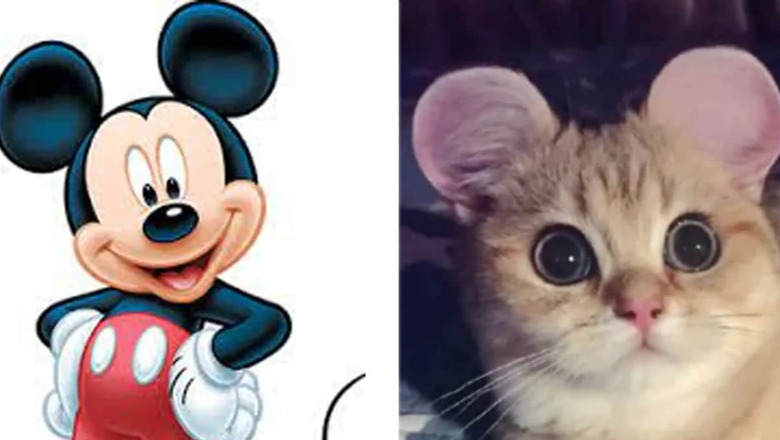
views
In recent times, an extremely shocking practice has taken root in China, as a growing number of pet owners are opting for cosmetic surgeries for their cats and dogs to make their ears look like that of Mickey Mouse, the iconic Disney character. This unsettling practice has prompted animal experts in the country to call for a halt to such procedures, expressing deep concerns about the well-being of the animals involved. The phenomenon is gaining traction, causing increasing discomfort among advocates for animal welfare.
The cosmetic interventions on pets in China extend beyond the pursuit of Mickey Mouse ears and encompass a range of procedures such as tail docking, ear cropping, and even dying the fur for purely aesthetic purposes, reports South China Morning Post (SCMP). This trend has drawn considerable attention and criticism, particularly as it poses potential health risks and raises ethical questions about the treatment of animals.
A noteworthy incident that sparked recent backlash occurred at a pet clinic in Chongqing, a city in southwestern China. The clinic, as reported by the SCMP, actively promoted a group purchase deal for the Mickey ear procedure through an advertisement. The clinic set a special rate of 300 yuan (approx. Rs 3533) for the surgery, but this discounted price came with a caveat – it was contingent on the factory’s production schedule and aimed to be completed in time for the Chinese Spring Festival.
The procedure itself involves putting an unsuspecting animal under anesthesia for a surgery that lasts approximately half an hour. The objective is to shape the ears in a way that mimics the distinctive upright appearance of Mickey Mouse’s ears. This shaping process spans a period of 20 to 60 days, during which the animals undergo a transformation intended solely for cosmetic reasons, as per SCMP.
While cosmetic surgeries for pets are not explicitly illegal in China, there is a discernible divide in their practice. Reputable hospitals in major cities generally refrain from performing such procedures, leaving them more commonly associated with dog kennels and breeding facilities, according to insights from animal experts.
Liu Yundong, a dean at Beijing’s Loving Care International Pet Medical Centre, shed light on the procedure, emphasising the ethical concerns surrounding it. He explained that the surgery involves not only physical pain for the animals but also subjects them to psychological torment. Furthermore, the use of anesthesia introduces additional risks, potentially leading to psychological trauma and physical side effects.
Yundong expressed a stark divergence of views within the veterinary community, stating, “As veterinarians, we adhere to the principle of animal welfare and do not advocate these surgeries. The colleagues I’ve encountered are tacitly opposed to such surgeries.”
Chen Yong, a veterinarian from Shenzhen Lianhe Pet Hospital, shared his insight with SCMP, warning of potential consequences. He highlighted that altering the natural structure of an animal’s ears could result in psychogenic problems, leading some pets to engage in self-mutilation behavior. This perspective further accentuates the risks associated with such cosmetic procedures.
The emerging trend has not gone unnoticed, and it has sparked significant online backlash from many Chinese pet lovers. The criticism is indicative of a broader societal concern regarding the ethical treatment of animals, with a growing recognition that cosmetic surgeries for pets, particularly those aimed at achieving a specific aesthetic, may compromise the well-being and natural state of these beloved companions.



















Comments
0 comment